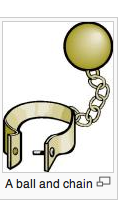Lea Wait's Blog, page 313
August 18, 2014
Meet Bette Stevens
John Clark sharing an interview with fellow Hartland author (and member of the library book discussion group), Bette Stevens.
1-Tell me about growing up–where, what authors influenced you, what are some of your strongest/most vivid memories from childhood?
I grew up in California (the early years) and later New York State. Our home was filled with books, magazines, pencils, crayons and water color paint and Mama had me reading, writing and drawing before I entered kindergarten. Fairy tales and Mother Goose Nursery Rhymes were among my early favorites. As the eldest of five children, I had a great deal of responsibility at home once babies started arriving (I was five). I was fortunate to spend several weeks each summer with my grandmother who taught me how to sew, knit, crochet, tat lace, make jewelry and create wood fiber flowers. Grandma regaled me with her stories of growing up in ‘the good old days’ when horse and carriage was the transportation norm and blizzards left snow drifts taller than two story houses. By middle school, I discovered Thyra Ferra Bjorn’s books at the local library, where I whiled away treasured quiet time with new friends (characters from Bjorn’s novels are a Swedish immigrant couple and their family). Papa’s Daughter was my first read from the series. I was hooked on historical fiction that helped me learn more about my family roots.
2-Coming to Maine, how did that happen?
The year was 1973—the year of the great oil crisis, when New Yorkers sat among the millions of Americans who were literally ‘sitting in line’ behind steering wheels on odd or even days, waiting to fill up their gas guzzlers. That was enough to make Dan and I put our home in Upstate New York on the market and head up to the land of “The Way Life Should Be,” where we’d been vacationing (tenting) for nearly a decade.
We already owned a parcel of land in Southern Maine. My husband’s maternal ancestors had been Mainers before Maine was a legitimate entity. Here’s the lineage link via Wikipedia: Simon Bradstreet, (baptized March 18, 1603/4[1] – March 27, 1697) was a colonial magistrate, businessman, diplomat, and the last governor of the Massachusetts Bay Colony. Arriving in Massachusetts on the Winthrop Fleet in 1630, Bradstreet was almost constantly involved in the politics of the colony but became its governor only in 1679. He served on diplomatic missions and as agent to the crown in London, and also served as a commissioner to the New England Confederation. He was politically comparatively moderate, arguing minority positions in favor of freedom of speech and for accommodation of the demands of King Charles II following his restoration to the throne.
The Bradstreet family farmstead burnt over in the 1947 fire—a forty-acre plot where we built a home without a mortgage (that took nearly ten years to complete) when we set out as part of the ‘back-to-the-landers’ movement. We raised sheep, chickens, turkeys, pigs and a variety of other critters and plowed ten acres for pick-your-own fruits and vegetables. The girls were six and three when we ‘landed’ and we’re proud to say that we’ve been Maine land owners ever since.
3-What did you take away from your teaching career that influenced you as a writer?
Actually, teaching was a second career. The first was in business where writing, editing and desktop publishing kept me on my writer’s toes until 1994 when I left to earn a B.S. in Education from University of Maine Orono. I volunteered in local schools for several years and saw a need that I wanted to fill. Teaching for eight years (1997-2005) was a dream job. I believe that teachers have the privilege and the opportunity to read and write on a daily basis and also to inspire kids to enjoy reading and writing. Those are among the things I want my children and young adult books to accomplish. I also hope that they’ll inspire readers to be the best they can be and to help others to do the same.
4-How did you become a writer?
Writing began during our ‘back-to-the land’ farm days in the 1970s and ’80s.
Inspired by nature and human nature, I enjoyed writing nugget poems and short stories for the family back then. In the business world of the 1980s and ’90s, I interviewed fellow employees and wrote human interest articles for the company’s twelve-page company newsletter. I was also editor and desktop publisher for the publication that reached more than 1,500 families. By the mid-1990s, I was an undergrad at UMO, where I mentored peers at the Writing Center and had two of my articles published in ECHOES Magazine.
By 1996, the first edition of THE TANGRAM ZOO AND WORD PUZZLES TOO! was published by Windswept House Publishing in Mt. Desert, Maine. In 1997, I wrote the first draft of AMAZING MATILDA, A Monarch’s Tale and used it as a teaching tool for my students. By the time I retired from teaching in 2005, I decided it was time to publish AMAZING MATILDA and publish a second edition of THE TANGRAM ZOO. Of course, I had to learn how to draw on the computer for THE ZOO and complete the pen and water color artwork for AMAZING MATILDA which took about six months.
I invite you to visit my website/blog at http://www.4writersandreaders.com to find out more about my books and my blog, read some of my poetry and download some free stuff too. You can sign up for my (approximate/bimonthly) email updates (right hand column) to get pre-released stories/news, photos and find out when my eBooks are free/discounted on Amazon.

Bette and her books
5-What have you written and what were the things that influenced them?
THE TANGRAM ZOO AND WORD PUZZLES TOO! is a hands-on activity book and a great resource for home or school that teaches and reinforces math, reading and writing skills.
AMAZING MATILDA—an award-winning picture book for children ages 5-10—follows the life cycle of a monarch butterfly and teaches kids, not only science, but life lessons about bullying, friendship, patience and persistence. As a writer, I advocate for monarch butterflies, a threatened species and for children and families, both on my blog and through my books.
PURE TRASH is a 1950s short story prequel to my soon-to-be-released debut novel—DOG BONE SOUP, A Boomer’s Journey. I wrote PURE TRASH as a short story for the YA/Adult audience to highlight the plight of a poor boy growing up rural New England. I believe the story is as relevant today as it would have been back then.
6-How have your books been received?
I’ve received a great deal of positive feedback from readers around the globe. Some of it is the form of book reviews on Amazon, Goodreads and Writer blogs. Kids love AMAZING MATILDA and I thoroughly enjoy visiting local classrooms, libraries, businesses and homes to read and discuss MATILDA’S story. There’s nothing that compares to watching and listening to my wide-eyed young friends!
7-What are you working on now?
My first novel:
DOG BONE SOUP, A Boomer’s Journey by Bette A. Stevens
Description:
Onion sandwiches and dog bone soup…
Shawn Daniels is leaving it all behind!
Boomers call them ‘The Good Old Days’—the 1950s and ’60s, when America was flying high. An era when the ‘All American Family’ lived a life filled with hopes and dreams come true.
Shawn Daniels isn’t your typical American boomer boy. No, Shawn is a poor boy. His father is the town drunk. Shawn’s family has no indoor plumbing or running water, but they do have a TV. After all, Dad (an alcoholic) deserves the rewards of his labor; while Shawn and his brother Willie keep the firewood cut and stacked, haul in water for cooking and cleaning, weed the gardens and shovel the snow. But when chores are done, these two resourceful boys discover boundless pursuits that are downright entertaining—and they don’t cost a dime.
On a bitter New England day in 1964, Shawn is on his way to boot camp to soak up the southern sun and strike out on a new adventure—one where it’s possible to make his hopes and dreams come true. Find out where this Boomer has been and where he’s going in DOGBONE SOUP: A Boomer’s Journey.
8-Has living in Hartland had any effect on you as a writer?
Being a writer inspired by nature and human nature, I’ve written several poems about nature since moving to Hartland and, yes, I’ve met lots of people. So, no matter where I go, there will always be poems to pen and stories that need to be told.
9-Best/worst experience as a writer?
Best? There is nothing that compares to getting that first copy of any book (proof or final). To this writer, holding it in my hands is worth a million bucks!
Worst? Reading a review by someone who doesn’t like my book, but even that has it’s upside—learning how to improve my writing.

Here’s lookin’ at ya kid.
August 17, 2014
Breathing Space
Kaitlyn Dunnett/Kathy Lynn Emerson here, musing today about the most useful trick I’ve learned in over thirty years of writing novels—giving myself breathing space between drafts. Deadlines being what they are, this isn’t always possible, but whenever I can manage it, I like to set aside the first complete draft of any work in progress for at least a month. That way, when I go back to it, I have some perspective. I can be objective about what needs fixing. I’ll have had time to find answers to those pesky research questions I didn’t anticipate and for my subconscious to come up with solutions for troublesome plot points. I try to take longish breaks between each revision, too. To accomplish this, I pretend that each project is due several months ahead of the actual due date. This isn’t always easy to do, but I have a good reason to try.
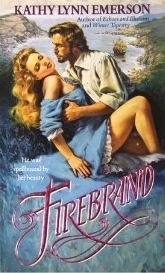
original cover
Back when I was writing historical romance as Kathy Lynn Emerson for the now defunct Harper Monogram line of paperback originals, I was offered a three book contract. Great, you say, but what was not so great was that the senior editor wanted the second story I’d proposed ahead of the other two and she wanted it in three months. I’d already started writing the first story. Finishing that one wouldn’t have been a problem. But the second novel I’d proposed, Firebrand, existed only as a title and a one-page synopsis—a very vague synopsis. The hook was something along the lines of “Today she’d be called a psychic. In 17th century New England the word was witch.” Never attempt to go from 300 words to 100,000 words in ninety days! Oh, I made my deadline, but I had a stress headache for almost that entire stretch. More than anything else, that convinced me that it is far better to incorporate lots of breathing space into the writing process . . . and not only because it will result in a better book.

e-book cover
Nowadays, having learned my lesson, I try to plan well ahead. When everything goes smoothly, this allows me to continue to write two or more books a year. While I work on project one, project two is “resting” and vice versa. In very rough terms, for just about anything I write under any name I need about a month for research and figuring out where to start, another three months or so to complete a rough draft (with several trips back to the beginning to revise and reorganize), three to four weeks for a complete read through/revision of the rough draft, and one to two weeks for a “final” revision that usually doesn’t end up being all that final, since there always seems to be tweaking that needs doing.
 In the breaks between those steps in project one, I work on project two. Most recently, I’ve been alternating between revising Kaitlyn’s 9th Liss MacCrimmon mystery, tentatively titled The Scottie Barked at Midnight and due September 1st, and working on the rough draft of the second Mistress Jaffrey Mystery (w/a Kathy), due January 15th. When I can, I take a break from both to add to my online opus, A Who’s Who of Tudor Women, or dig out one of the many projects I’ve started and abandoned over the years. A contemporary short story is the current “back-burner project”—a manuscript that isn’t going to sell in its present form but still has potential. As with the novels, if I let enough time pass before I take another look at that story, I may just think of an absolutely brilliant way to revise it.
In the breaks between those steps in project one, I work on project two. Most recently, I’ve been alternating between revising Kaitlyn’s 9th Liss MacCrimmon mystery, tentatively titled The Scottie Barked at Midnight and due September 1st, and working on the rough draft of the second Mistress Jaffrey Mystery (w/a Kathy), due January 15th. When I can, I take a break from both to add to my online opus, A Who’s Who of Tudor Women, or dig out one of the many projects I’ve started and abandoned over the years. A contemporary short story is the current “back-burner project”—a manuscript that isn’t going to sell in its present form but still has potential. As with the novels, if I let enough time pass before I take another look at that story, I may just think of an absolutely brilliant way to revise it.
 Of course, there is one caveat. Interruptions are bound to occur in even the most carefully planned writing schedule. Some might be personal—everything from a bout with the common cold to helping care for an aging parent. Others derive from the editorial process. The dreaded revision letter from the editor may require five minutes of tinkering or five weeks of major rewrites. Dodge that bullet and there are still copy-edits to deal with. And then there are the page proofs, what used to be called galleys, to review. Since this is the author’s last chance to catch anything that still needs fixing, that means it’s necessary to drop everything else and get it done. All three of these stages are likely to take up large chunks of time, but the real problem is that you never know exactly when they will demand your attention. As of today, August 18th, the manuscript of Liss #9 is due on September 1st and I’m about to start one last read through. I think it’s in good shape, but what if I find some previously overlooked error that requires rewriting an entire scene? Meanwhile, the copy edits for the first Mistress Jaffrey Mystery, Murder in the Queen’s Wardrobe, are scheduled to arrive “toward the end of August” and my responses will need to go back to the publisher ASAP.
Of course, there is one caveat. Interruptions are bound to occur in even the most carefully planned writing schedule. Some might be personal—everything from a bout with the common cold to helping care for an aging parent. Others derive from the editorial process. The dreaded revision letter from the editor may require five minutes of tinkering or five weeks of major rewrites. Dodge that bullet and there are still copy-edits to deal with. And then there are the page proofs, what used to be called galleys, to review. Since this is the author’s last chance to catch anything that still needs fixing, that means it’s necessary to drop everything else and get it done. All three of these stages are likely to take up large chunks of time, but the real problem is that you never know exactly when they will demand your attention. As of today, August 18th, the manuscript of Liss #9 is due on September 1st and I’m about to start one last read through. I think it’s in good shape, but what if I find some previously overlooked error that requires rewriting an entire scene? Meanwhile, the copy edits for the first Mistress Jaffrey Mystery, Murder in the Queen’s Wardrobe, are scheduled to arrive “toward the end of August” and my responses will need to go back to the publisher ASAP.
I think I can guarantee that, despite my best efforts to create breathing space, I will be feeling the pressure of those deadlines for the next two weeks.
August 15, 2014
Weekend Update: August 16-17, 2014
 Next week at Maine Crime Writers there will be posts by Kaitlyn Dunnett/Kathy Lynn Emerson (Monday), John Clark (Tuesday), Susan Vaughan (Wednesday), Sarah Graves (Thursday), and Kate Flora (Friday).
Next week at Maine Crime Writers there will be posts by Kaitlyn Dunnett/Kathy Lynn Emerson (Monday), John Clark (Tuesday), Susan Vaughan (Wednesday), Sarah Graves (Thursday), and Kate Flora (Friday).
In the news department, here’s what’s happening with some of us who blog regularly at Maine Crime Writers:
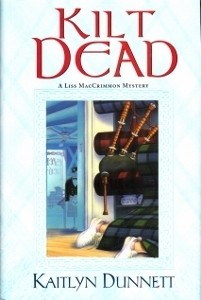 from Kaitlyn Dunnett: The first book in my Liss MacCrimmon Scottish-American Heritage Mystery series, Kilt Dead, is on sale through the 22nd of this month as a Kindle download. Bargain price is just $1.99. We’re gearing up for the release of the paperback edition of last year’s hardcover, Vampires, Bones, and Treacle Scones [#7] on September 2nd and the debut of the new hardcover, Ho-Ho-Homicide [#8] on October 28th. In Kilt Dead, Liss returns to her hometown of Moosetookalook, Maine after a knee injury ends her career as a professional Scottish dancer. She’s agreed to take charge of the family business, Moosetookalook Scottish Emporium, while her aunt makes a buying trip to Scotland. What she doesn’t bargain for is finding a body in the stock room and being suspected of putting it there.
from Kaitlyn Dunnett: The first book in my Liss MacCrimmon Scottish-American Heritage Mystery series, Kilt Dead, is on sale through the 22nd of this month as a Kindle download. Bargain price is just $1.99. We’re gearing up for the release of the paperback edition of last year’s hardcover, Vampires, Bones, and Treacle Scones [#7] on September 2nd and the debut of the new hardcover, Ho-Ho-Homicide [#8] on October 28th. In Kilt Dead, Liss returns to her hometown of Moosetookalook, Maine after a knee injury ends her career as a professional Scottish dancer. She’s agreed to take charge of the family business, Moosetookalook Scottish Emporium, while her aunt makes a buying trip to Scotland. What she doesn’t bargain for is finding a body in the stock room and being suspected of putting it there.
Lea Wait: Busy week, here! Saturday, August 16, I’ll be speaking about my Uncertain Glory and Maine during the Civil War at Willowbrook Village in Newfield, Maine. Willowbrook is a reconstructed 19th century village … a great place to talk about an historical novel. Wednesday, August 20, I’ll be putting on my Maggie Summer persona and displaying and selling both my books and my antique prints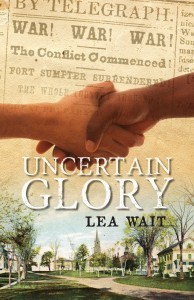 at the Maine Antique Dealers’ Association show at Round Top Farm on business route 1 in Damariscotta from 9 until 4. Lunch will be available, I’ll be one of about 70 dealers, and if you come looking for me — my booth is inside the barn. Then Saturday, August 23, at 11 a.m. I’ll be speaking about Shadows of a Down East Summer at The Yarn Seller, 264 Route 1, in York Maine. I’ll be bringing some of my Winslow Homer engravings to share, and will have copies of my other books available for purchase and signing, too. And I do have a manuscript due September 1 …
at the Maine Antique Dealers’ Association show at Round Top Farm on business route 1 in Damariscotta from 9 until 4. Lunch will be available, I’ll be one of about 70 dealers, and if you come looking for me — my booth is inside the barn. Then Saturday, August 23, at 11 a.m. I’ll be speaking about Shadows of a Down East Summer at The Yarn Seller, 264 Route 1, in York Maine. I’ll be bringing some of my Winslow Homer engravings to share, and will have copies of my other books available for purchase and signing, too. And I do have a manuscript due September 1 …
An invitation to readers of this blog: Do you have news relating to Maine, Crime, or Writing? We’d love to hear from you. Just comment below to share. Don’t forget that comments are entered for a chance to win our wonderful basket of books and the very special moose and lobster cookie cutters.
And a reminder: If your library, school, or organization is looking for a speaker, we are often available to talk about the writing process, research, where we get our ideas, and other mysteries of the business. Contact Kate Flora: mailto: kateflora@gmail.com
August 14, 2014
Online Scams Are Increasing
Jayne Hitchcock here – I got my husband a police scanner the other day and noticed a lot of citizens were calling their police departments about a prevalent scam these days. They were getting phone calls from someone claiming to be with the IRS and if they didn’t pay a certain amount of money (anywhere from a few hundred to thousands of dollars) they would be arrested. Well, that scam has hit Maine.
The scammer sounds threatening and demands payment be made via Western Union or a Green Dot MoneyPak Card (purchased from Wal Mart). One person duped by this actually paid $14,000 before realizing it was a scam.
I honestly don’t know why people are still falling for scams like this one. If there was a problem with your tax return or if you really did owe money, the IRS would not call you, they would mail you letter detailing what is owed. Also, you would never be asked to pay via wire or a card – that really should have raised a red flag for victims. It’s a shame people lose money from scams like this. Even if the perpetrators are caught, it is highly unlikely the victim will ever see the money they lost.
This is similar to the Microsoft Windows scam – you would either get a phone call or a window would pop up on your computer screen claiming there was a problem with your version of Windows. They would then ask to remotely control your computer (GIANT red flag right there). If you did that, they would infect your computer with a virus, then demand money to remove it. This actually happened to a friend’s wife. Luckily, I was on the phone with her while she was on her cell phone with the scammer. I told her just to hang up. She was being way too polite. She told me afterwards her computer had been acting very slow of late. I gave her the number of a local computer repair guy who is a friend of mine and told her to never, ever respond to any demands for money or remotely controlling her computer and to call me if anything like that happened again.
How do these scammers get your phone number? Two ways: 1. They scour White Pages listings online and call all listed numbers 2. They Google “cell phone numbers” and if your cell number is somewhere online, they’ll get it and call you.
To lessen the chance of getting a scam call, either change your number to an unpublished one or switch it to unpublished and notify any white pages search engines to remove your listing. If you don’t make your number unpublished, the white pages search engines will add it again when they update their site every year. Don’t post your cell or phone number anywhere online. I use a free voicemail service at j2.com. The reason it’s free is it is not in your area code. I get any voicemails or faxes sent to my email inbox. I use this number pretty much everywhere I can online and put it on my business cards. If you do want to have the number in your area code, there is a small monthly fee you need to pay.
Microsoft won’t call you. The IRS won’t call you. Mark Zuckerberg surely won’t call you. My advice is to not even respond to the person and hang up. If they call back, block them on your smartphone or let the answering machine pick up if you don’t recognize the number (many scammers switch to a new phone number hoping you will still answer the phone).
But if you do want to have fun with them, you can do what this guy did: Man Records Fake Microsoft Call
Stay safe online, my friends.
August 13, 2014
Let Them Eat Rock Cakes
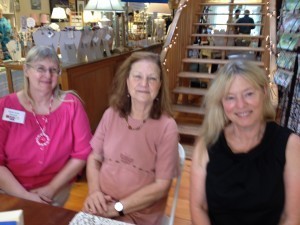
Dorothy, who is much more glam than this photo suggests, allowed out to play with Kate Flora and Kaitlyn Dunnett
Dorothy Cannell here, hoping you’ll forgive me for not doing a longer post, but the fact is that I’ve got a book due very soon and I’m a bit behind. Indeed, I’m in that place that some of my fellow bloggers here at Maine Crime Writers refer to as “Book Jail.” It’s a self-imposed imprisonment that’s necessary to get the book done on time. Hard on me, since we’re having a lovely summer here in Maine. But our publishers don’t really care if the weather outside is frightful or delightful. They want us to produce.
So, while I’m slaving away here in a dark basement, getting my meals on a tray, I hope you’re going to be cooking up a storm, and making these delicious Rock Cakes.
These cakes are a cousin of sorts to scones and are traditionally English. They are mentioned by Mrs. MacDonald (the cook) in Murder at Mullings as being favorites of the young master of the house. They are especially good accompanied by a cup of tea. I will be posting this recipe and others from the book on Facebook later this year.
MacDonald (the cook) in Murder at Mullings as being favorites of the young master of the house. They are especially good accompanied by a cup of tea. I will be posting this recipe and others from the book on Facebook later this year.
Measurements:
3/4th stick of butter
1 and 1/2 cups of all purpose flour
1 tbsp of baking powder
1/2 cup of sugar
2/3 cup of raisins
1 medium egg
1 tbsp of milk
glace’ cherries for decorating
To be baked 15 to 20 minutes, oven 400 F. Makes 12 rock cakes
Grease two baking sheets, or preferably use parchment paper.
Combine flour and baking powder; and then rub or cut-in butter until you have a crumb-like texture. Stir in the sugar and raisins with a knife until you have a well-mixed speckled mixture.
Beat the egg with a table spoon (or more) of milk and work into the mixture with a fork until it is rather stiff. Divide into twelve portions, decorate each with half glace’ cherry, and place them on baking sheet. When lightly brown remove from oven and transfer to a wire tray to cool.
The above is my adaptation of the traditional recipe. My husband Julian loves them hot right out of the oven. I often make them on grey, dreary days to cozy things up.
Happy baking! And wish me luck.
The Acadian Expulsion

Grand-Pre, Nova Scotia at the time of the Great Upheaval.
Vaughn C. Hardacker here: In my last blog I wrote about one of my more infamous ancestors, Lizzie Andrew Borden (1860 – 1927). The familial link to Lizzie was only one of the surprises I got while doing a detailed genealogy of the Hardacker clan. My great-grandparents, Charles Hardacker and his wife (Esther Amanda Borden) and seven of their eight children (the eldest, Ella Mae, remained in Nova Scotia with her husband) came to northern Maine from Grand-Pré, Nova Scotia, Canada shortly after the turn of the twentieth century. All I knew about Grand-Pré was that it was the heart of the Annapolis Valley, the area from which the Acadians were forced to leave. Further research into the family of my paternal grandmother revealed that my great-great-grandmother was Natalie Sarah Thibodeau. I then traced the Thibodeau line back to…yup…Grand-Pré, Nova Scotia.
The fact that two separate families should have one common place in their history peaked my curiosity. This year the Fifth World Acadian Congress is meeting in what was a portion of New France in the seventeenth and eighteenth centuries, namely throughout eastern Quebec, Canada, northwest New Brunswick, Canada and the U. S.-Saint John Valley towns located along the border with Canada. Many of the Acadian families are having reunions in conjunction with the Congress (Officially Congrès Mondial Acadien 2014, CMA 2014), which is being held from August 8 to 24, 2014. The Thibodeau family reunion will be on August 16th and 17th 2014 at Rivière-Verte, New Brunswick.
To cut to the matter, I found myself interested in the Acadian expulsion (also known as the Great Upheaval. Here’s a summation of what I learned. The first thing I needed to know was: Where was this area known as Acadia? Acadia (French: Acadie) was a colony of New France in northeastern North America that included parts of eastern Quebec, the Maritime provinces, and modern-day Maine to the Kennebec River. During much of the 17th and early 18th centuries, Norridgewock on the Kennebec River and Castine at the end of the Penobscot River were the southern-most settlements of Acadia. The actual specification by the French government for the territory refers to lands bordering the Atlantic coast, roughly between the 40th and 46th parallels.
Later, the territory was divided into the British colonies which became Canadian provinces and American states. The population of Acadia included members of the Wabanaki Confederacy (translated roughly as ‘People of the First Light’ or ‘People of the Dawnland’. A First Nations and Native American confederation of five principal Nations: the Mi’kmaq, Maliseet, Passamaquoddy, Abenaki and Penobscot.) and descendants of emigrants from France (i.e., Acadians). The two communities inter-married, which resulted in a significant portion of the population of Acadia being Métis (people resulting from the intermarriage of Europeans and native aboriginal peoples).
The Expulsion (1755–1764) occurred during the French and Indian War (the North American theatre of the Seven Years’ War) and was part of the British military campaign against New France. The British first deported Acadians to the Thirteen Colonies, and, after 1758, transported additional Acadians to France. In all, approximately 11,500 Acadians were deported. After the British conquest of Acadia in 1710, the 1713 Treaty of Utrecht allowed the Acadians to keep their lands. Over the next forty-five years, however, the Acadians refused to sign an unconditional oath of allegiance to Britain. During the same period, they also participated in various military operations against the British, and maintained supply lines to the French fortresses of Louisbourg (located on Cape Breton, Nova Scotia, Canada) and Fort Beauséjour (present-day Aulac, New Brunswick, Canada). As a result, the British sought to eliminate any future military threat posed by the Acadians and to permanently cut the supply lines they provided to Louisbourg by removing them from the area.
Without making distinctions between the Acadians who had been neutral and those who had resisted the occupation of Acadia, the British governor Charles Lawrence and the Nova Scotia Council ordered them to be expelled. In the first wave of the expulsion, Acadians were deported to other British colonies. During the second wave, they were deported to Britain and France, from where they migrated to Louisiana. Acadians fled initially to Francophone colonies such as Canada, the uncolonized northern part of Acadia, Isle Saint-Jean and Isle Royale. During the second wave of the expulsion, these Acadians were either imprisoned or deported. Throughout the expulsion, Acadians and the Wabanaki Confederacy continued a guerrilla war against the British in response to British aggression which was continuous since 1744 (see King Georges War and Father Le Loutre’s War).
Along with the British achieving their military goals of defeating Louisbourg and weakening the Mi’kmaq and Acadian militias, the result of the Expulsion was the devastation of both a primarily civilian population and the economy of the region. Thousands of Acadians died in the expulsions, mainly from diseases and drowning when ships were lost. On July 11, 1764, the British government passed an order-in-council to permit Acadians to legally return to British territories, provided that they take an unqualified oath of allegiance. The American poet Henry Wadsworth Longfellow memorialized the historic event in his poem about the plight of the fictional character Evangeline, which was popular and made the expulsion well known. According to Acadian historian Maurice Basque, the story of Evangeline continues to influence historic accounts of the deportation, emphasizing neutral Acadians and de-emphasizing those who resisted the British Empire.
Who says nothing ever happens in Maine!
The Acadian Expulsion
Vaughn C. Hardacker here: In my last blog I wrote about one of my more infamous ancestors Lizzie Andrew Borden (1860 – 1927). The familial link to Lizzie was only one of the surprises I got while doing a detailed genealogy of the Hardacker clan. My great-grandparents, Charles Hardacker and his wife (Esther Amanda Borden) and seven of their eight children (the eldest, Ella Mae, remained in Nova Scotia with her husband) came to northern Maine from Grand-Pré, Nova Scotia, Canada shortly after the turn of the twentieth century. All I knew about Grand-Pré was that it was the heart of the Annapolis Valley, the area from which the Acadians were forced to leave. Further research into the family of my paternal grandmother revealed that my great-great-grandmother was Natalie Sarah Thibodeau. I then traced the Thibodeau line back to…yup…Grand-Pré, Nova Scotia.
The fact that two separate families should have one common place in their history peaked my curiosity. This year the Fifth World Acadian Congress is meeting in what was a portion of New France in the seventeenth and eighteenth centuries, namely throughout eastern Quebec, Canada, northwest New Brunswick, Canada and the U. S. Saint John Valley towns located along the border with Canada. Many of the Acadian families are having reunions in conjunction with the Congress (Officially Congrès Mondial Acadien 2014, CMA 2014), which is being held from August 8 to 24, 2014, the Thibodeau family reunion will be on August 16th and 17th 2014 at Rivière-Verte, New Brunswick.
To cut to the matter, I found myself interested in the Acadian expulsion (also known as the Great Upheaval. Here’s a summation of what I learned… The first thing I needed to know was: Where was this area known as Acadia? Acadia (French: Acadie) was a colony of New France in northeastern North America that included parts of eastern Quebec, the Maritime provinces, and modern-day Maine to the Kennebec River. During much of the 17th and early 18th centuries, Norridgewock on the Kennebec River and Castine at the end of the Penobscot River were the southern-most settlements of Acadia. The actual specification by the French government for the territory refers to lands bordering the Atlantic coast, roughly between the 40th and 46th parallels.
Later, the territory was divided into the British colonies which became Canadian provinces and American states. The population of Acadia included members of the Wabanaki Confederacy (translated roughly as ‘People of the First Light’ or ‘People of the Dawnland’. A First Nations and Native American confederation of five principal Nations: the Mi’kmaq, Maliseet, Passamaquoddy, Abenaki and Penobscot.) and descendants of emigrants from France (i.e., Acadians). The two communities inter-married, which resulted in a significant portion of the population of Acadia being Métis (people resulting from the intermarriage of Europeans and native aboriginal peoples).
The Expulsion (1755–1764) occurred during the French and Indian War (the North American theatre of the Seven Years’ War) and was part of the British military campaign against New France. The British first deported Acadians to the Thirteen Colonies, and after 1758 transported additional Acadians to France. In all, approximately 11,500 Acadians were deported. After the British conquest of Acadia in 1710, the 1713 Treaty of Utrecht allowed the Acadians to keep their lands. Over the next forty-five years, however, the Acadians refused to sign an unconditional oath of allegiance to Britain. During the same period, they also participated in various military operations against the British, and maintained supply lines to the French fortresses of Louisbourg (located on Cape Breton, Nova Scotia, Canada) and Fort Beauséjour (present-day Aulac, New Brunswick, Canada). As a result, the British sought to eliminate any future military threat posed by the Acadians and to permanently cut the supply lines they provided to Louisbourg by removing them from the area.
Without making distinctions between the Acadians who had been neutral and those who had resisted the occupation of Acadia, the British governor Charles Lawrence and the Nova Scotia Council ordered them to be expelled. In the first wave of the expulsion, Acadians were deported to other British colonies. During the second wave, they were deported to Britain and France, from where they migrated to Louisiana. Acadians fled initially to Francophone colonies such as Canada, the uncolonized northern part of Acadia, Isle Saint-Jean and Isle Royale. During the second wave of the expulsion, these Acadians were either imprisoned or deported. Throughout the expulsion, Acadians and the Wabanaki Confederacy continued a guerrilla war against the British in response to British aggression which was continuous since 1744 (see King Georges War and Father Le Loutre’s War).
Along with the British achieving their military goals of defeating Louisbourg and weakening the Mi’kmaq and Acadian militias, the result of the Expulsion was the devastation of both a primarily civilian population and the economy of the region. Thousands of Acadians died in the expulsions, mainly from diseases and drowning when ships were lost. On July 11, 1764, the British government passed an order-in-council to permit Acadians to legally return to British territories, provided that they take an unqualified oath of allegiance. The American poet Henry Wadsworth Longfellow memorialized the historic event in his poem about the plight of the fictional character Evangeline, which was popular and made the expulsion well known. According to Acadian historian Maurice Basque, the story of Evangeline continues to influence historic accounts of the deportation, emphasizing neutral Acadians and de-emphasizing those who resisted the British Empire. Who says nothing ever happens in Maine!
August 12, 2014
My Left Foot
James Hayman: Two and a half weeks ago I was carrying a moderately heavy wooden table down the basement steps of our new house, missed the last step and fell over on my left foot. Happily I didn’t break my hip which I landed heavily on. But I did fracture my fifth metatarsal in two separate places and broke a chip off another bone whose name I can’t recall.
Since the injured foot didn’t seem to hurt that much and since we were expecting six people for dinner in half an hour, I declined a trip to the emergency room and managed to smile my way through dinner, doing me best to play the role of gracious host. I thought (hoped) the injury was only a sprain. Next morning we went to the doctor, got the x-rays and learned that I would be in a boot and possibly a cast for anywhere from four to sixteen weeks, depending on weather or not surgery would be required. My doctor told me under no circumstances to walk or to put any weight on the offending foot. The penalty for disobedience, he said, would be the surgical alternative, in which two pins would be inserted in my foot to bind the fractures together. He even produced a “no-walking” traffic image which Jeanne has taped to the wall in our living room.
I’ve done my best to obey. I sit with my injured leg raised all day and try to concentrate on my writing with only semi-success. I never did like writing in the house anyway. Too many distractions which are made even worse by my inability to answer a caterwauling telephone or to get anything at all for myself. I’m constantly asking my wife for this or for that which, to her credit, she usually gets without complaint.
When not writing, I fool around on the Internet or sit and read. Still I’m bored and impatient for the damned thing to heal. And yes, I do feel sorry for myself. Which is, I am totally aware, ridiculous. It is, after all, only a broken bone in my foot. I’m not being bombed in Gaza or chased by Muslim fanatics in Iraq. I’m sitting peacefully in a comfortable house in Portland.
On the other hand, I can’t use my left foot. And, heck, even Christy Brown could do that.
For those of you who remember it, My Left Foot was the title of a 1989 movie that tells the true story of Christy Brown. Brown, an Irishman, was born with cerebral palsy and able to control only that single appendage of his body. In spite of his overwhelming infirmity, Brown became a successful writer typing his autobiography (as I recall) with his toes (amazing!) and also a respected artist painting with a brush held between his toes (equally amazing). Daniel Day-Lewis played the role of Christy Brown. Many of the scenes of Brown using his left foot to paint or write were shot in a mirror to reverse the image since Day-Lewis could only manipulate his right foot in the way the scenes required and then only with considerable practice.
The movie was nominated for five Academy Awards for best picture, best director (Jim Sheridan), best adapted screenplay (Sheridan and Shane Connaughton). It won two Oscars. One for best actor for Day-Lewis in the title role and one for best supporting actress for Brenda Flicker who played Brown’s mother.
There is no way not to be inspired by Christy Brown’s extraordinary courage and accomplishments in the face of a debilitating handicap.
So as I sit here in my heavy plastic boot with my wife waiting on me hand and foot (or is it mostly foot?) I tell myself to stop whining and emulate those like Brown who have far more determination and courage than I would ever have imagined possible.
August 10, 2014
When Storms Come In …
Note: When Storms Come In by Lea Wait appears in the current issue of Mystery Readers Journal, which features essays about extreme weather in mysteries. To read more essays like this, see http://www.mysteryreaders.org/issues/weather.html
—
One of the challenges of writing a mystery is keeping the hero or heroine on their toes. No matter what happens, they need to be thrown obstacle after obstacle to overcome …until finally they succeed in identifying the killer and putting the universe on an even keel once more.
Obstacles take many forms. Suspects who have motives and opportunity can lead the sleuth in the wrong direction. Personal problems – physical, emotional, or relationship – can be distracting. Life can interfere, in the guise of a flat tire or flood or fire or .. as in two of my books, Shadows of a Down East Summer and Shadows on a Cape Cod Wedding, severe storms. In both cases they complicate the protagonist’s life … and therefore delay the resolution of the plot.
In Shadows of a Down East Summer a Maine nor’easter arrives on the day of an antique show scheduled to be held outdoors on a county fair ground. My protagonist, Maggie Summer, is like me: she’s an antique print dealer who refuses to do outdoor shows because of the damage winds, rain and dust can do to prints. But her beau, Will Brewer, specializes in kitchen ware and fireplace implements. He has no problem with outdoor shows.
Although I don’t exhibit at outdoor shows, I’ve attended many, and have exhibited at shows where my booth was safely indoors, but others were outside, under tents.
So I was all too familiar with the problems Maggie and Will faced when they got up pre-dawn to drive to a fairground to set up for a one-day show … and discover the road partially washed out, the fairground awash in mud, and tents teetering in high winds and heavy rains. Eventually making it to the spot where they’re going to set up, they must keep their antiques dry while moving them from the van to their booth under the tent. The tent quakes and shudders. Occasionally breaks in the stitching results in sudden downpours inside the tent .. soaking merchandise not designed to be used outdoors. The tent poles sink deeper in the mud, while the tent itself, caught by the winds, threatens to collapse or sail off. Maggie and Will are soaked, cold … and, of course, few customers arrive. Just one more day in the reality of antique dealing.
And … their absence from home dealing with the storm means than an event crucial to the mystery’s plot can happen while they are out defying the elements.
Several dozen antique dealers told me that my description of antique dealers coping with the storm was their favorite part of the book … they, too, had put the legs of mahogany tables in soup cans to keep them away from mud, and attempted in vain to keep textiles and paintings dry in torrential downpours.
The storm worked so well, in fact, that in Shadows on a Cape Cod Wedding I created a late-season hurricane which hit the Cape in October. It stopped wedding guests from afar from arriving since airports were closed. Bridges were shut, roads were flooded, the wedding reception venue was under water, and electrical power was out, so food couldn’t be cooked. The storm complicated life for everyone, good and bad, on the Cape.
And of course my villain took advantage of the storm to … But, then, if I told you, you wouldn’t read the book!
I wrote Shadows on a Cape Cod Wedding before Hurricane Sandy hit the New England Coast in 2012. I based the storm in the book on a hurricane I remembered: Hurricane Carol. I was a child, vacationing on the Cape with my family, in 1954 when Hurricane Carol threatened to come ashore. I remember us packing up quickly and being evacuated on the one road that leaves the Cape and crosses the bridge to the mainland… which was jammed with traffic. We later heard the cottage we’d rented that summer had been flooded up to the second floor.
Since then I’ve live through a wide assortment of hurricanes. I’ve watched as streets filled up with water. I’ve watched trees falling, one after the other, in the vacant lot across the street from my home. I’ve watched surf hitting buildings and roads far from the ocean.
Storms are a part of east coast life.
And, in Shadows on a Cape Cod Wedding the wedding is a bit damp, but it does happen .. and everybody …well, almost everybody … lives happily ever after when the storm clears.
Which should be what happens in a mystery. And in life.
August 8, 2014
Weekend Update: August 9-10, 2014
 Next week at Maine Crime Writers there will be posts by Lea Wait (Monday), Jim Hayman (Tuesday), Vaughn Hardacker (Wednesday), Dorothy Cannell (Thursday), and Jayne Hitchcock (Friday).
Next week at Maine Crime Writers there will be posts by Lea Wait (Monday), Jim Hayman (Tuesday), Vaughn Hardacker (Wednesday), Dorothy Cannell (Thursday), and Jayne Hitchcock (Friday).
In the news department, here’s what’s happening with some of us who blog regularly at Maine Crime Writers:
Lea Wait: A busy week ahead! I’m looking forward to visiting Swan’s Island in Maine for the first time this week! On Tuesday, August 12, I’ll be speaking at the library there — twice. Once in the afternoon, at 2 o’clock, about Uncertain Glory (I’m bringing some Civil War artifacts with me,) and then at 7 in the evening I’ll be back to talk about my mysteries. Can hardly wait! Then, Friday night, I’ll be at the Stable Gallery in Damariscotta (5-7 p.m.) for an opening in which my husband Bob Thomas’ art is featured — and Saturday, the 16th, I’ll be speaking, again about Uncertain Glory, this time at Willowbrook Village, a reconstructed 19th century village in Newfield, Maine. You’ll find me there from 12:30 until 1:30.
Kaitlyn Dunnett: In the planning way ahead department, I’ve just been tapped for next year’s Wilton Blueberry Festival (this year’s festival was last weekend) because the theme is going to be “Reading and Writing” and local writers (very local, as in writers having a connection to Wilton, Maine) will be doing signings. Look for more about this just before the first weekend in August next year.
An invitation to readers of this blog: Do you have news relating to Maine, Crime, or Writing? We’d love to hear from you. Just comment below to share. Don’t forget that comments are entered for a chance to win our wonderful basket of books and the very special moose and lobster cookie cutters.
And a reminder: If your library, school, or organization is looking for a speaker, we are often available to talk about the writing process, research, where we get our ideas, and other mysteries of the business. Contact Kate Flora: mailto: kateflora@gmail.com
Lea Wait's Blog
- Lea Wait's profile
- 509 followers



